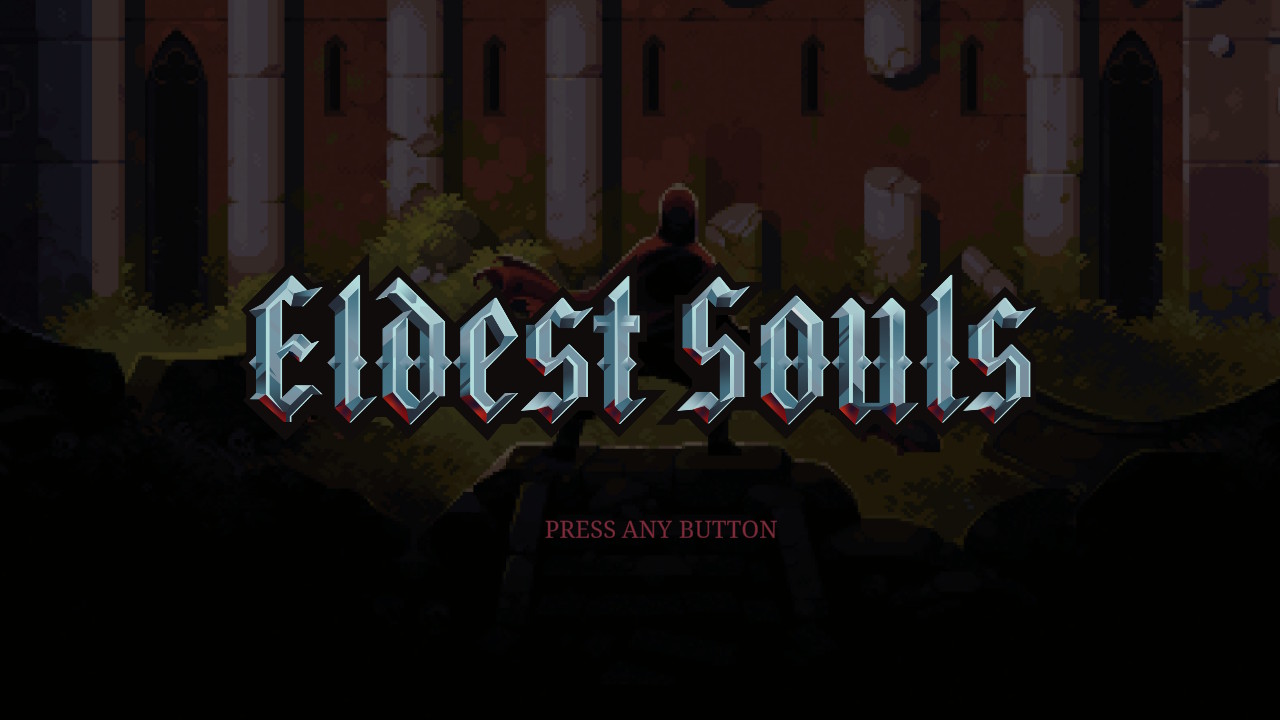Eldest Souls
Nintendo Switch
Developed By: Fallen Flag Studios
Published By: United Label
Category: Action, Adventure, Role-Playing, Boss Rush, Souls-Like
Release Date: 6.29.21
Composer: Sergio Ronchetti
I should be a bigger fan of the boss rush genre than I am. The idea of a game cutting out the filler and focusing totally on the most challenging and memorable portion of the gameplay has an inherent appeal, I just haven’t yet found one that I’ve connected with. I do enjoy a good Souls-like now and again, though, so when the Souls-like boss rush Eldest Souls popped into the review code list, I was certainly intrigued. Ultimately, I’m not sure the combination works out, however there was a lot I really liked about Eldest Souls – but it has its warts, too.
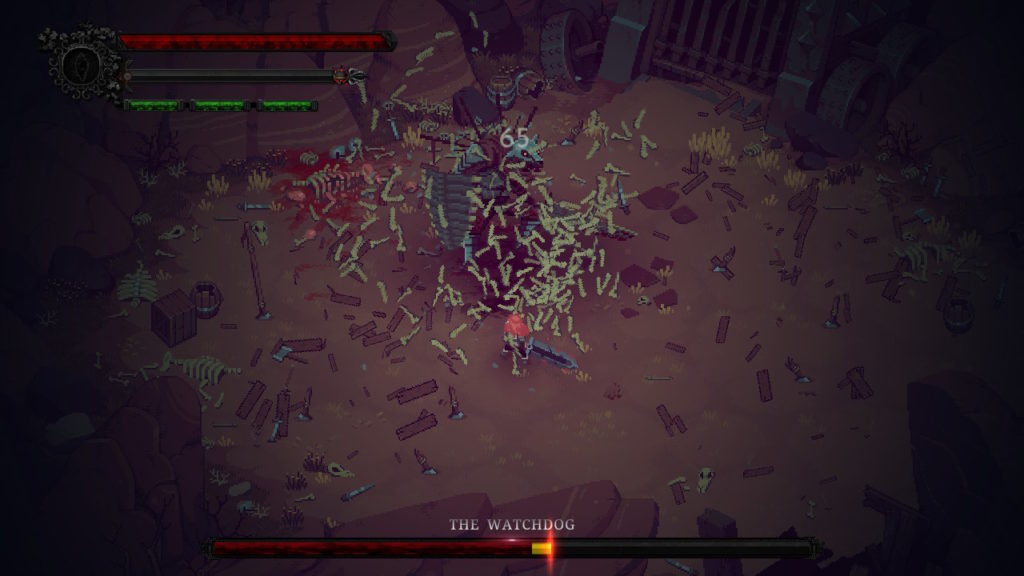
Abandon All Hope, Ye Who Enter Here
Eldest Souls tells the story of a lone warrior entering the mysterious Citadel, where mankind imprisoned the gods after a long war between the two. The Citadel has fallen from within, as has the army raised to take it back. There’s a sparse but compelling backstory to uncover as you carve your way through the Citadel’s fallen gods. Scattered notes flesh out the world and its struggles with well-written vignettes. There’s nothing at all wrong with the writing, setting, or story in Eldest Souls, it just feels like every dark action RPG I’ve played since Diablo. Luckily, I love Diablo so much that I even like things that remind me of it, so I’ll count that as a positive.
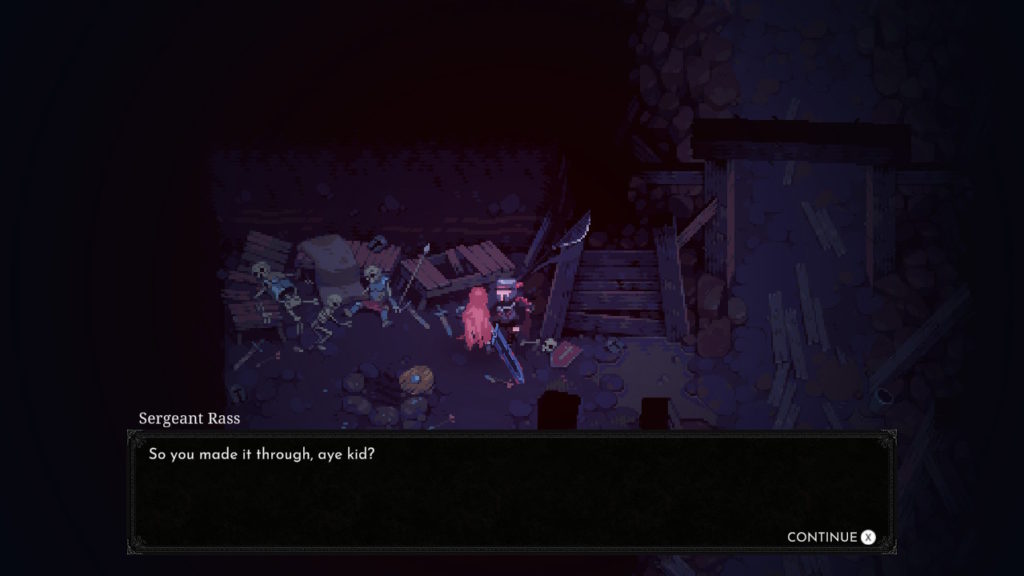
Fight Bosses, Find Stuff
The gameplay loop in Eldest Souls isn’t especially complex. Players explore the Citadel in a series of small areas in between brutally difficult boss fights. Calling it “exploration” may be overstating things a bit – there isn’t a lot to explore, really. There are a few items to find and lore-expanding notes to read in each area. Most areas also have an NPC or two that will ask you for one of the items you may have found or will find. The rewards are generally trinkets that buff your stats in some way, and you’ll definitely want every one of them.
The combat portions of the game are – well, I’d say “challenging,” but that’s an understatement. Like most Souls-likes, the gameplay is purposefully – but consistently – imbalanced. What I mean by that is that the game is designed well enough that you can almost always see the (very narrow) path to victory by paying close attention to boss patterns, but it will still absolutely crush you most of the time anyway.
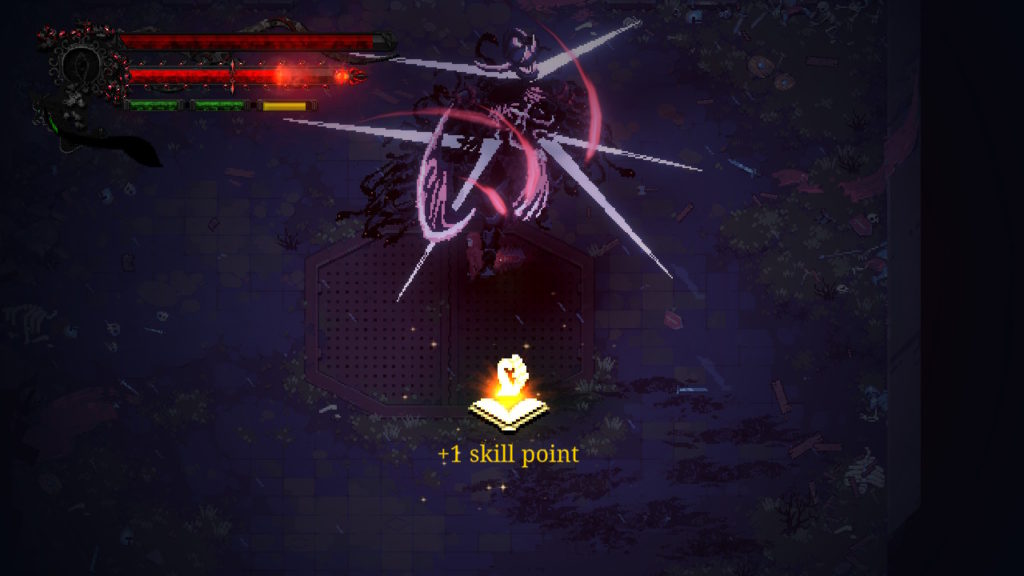
The Mechanics of the Mayhem
Players have a few tools in their arsenal to start with, and you can unlock more in the game’s skill trees as you defeat more bosses. Defeating a boss will generally result in the acquisition of a new skill point and a crystal. Points can be assigned to any of the game’s three skill trees, but only one tree can be active at a time. Crystals can be assigned to modify charge attacks, bloodburst attacks, or dash effects, or add a bonus to whatever skill tree is active. Points and crystals can be freely reassigned at any time.
As for combat itself, it’s fairly straightforward in terms of concept, but exceedingly difficult to execute. You have a basic attack, which you can charge by holding down the attack button. Unleashing a charge attack will both replenish a small amount of lost HP and fill the bloodburst bar. When the bloodburst bar is more than half full, you can unleash your bloodburst attack, which deals huge damage and absorbs a small amount of HP – at first. You can gain additional bloodburst effects when you have a crystal attached to it, like greater HP regeneration or increased movement speed for a short time. You can also have a special attack that fills its own bar depending on which skill tree you have equipped.
Finally, you can dash to evade attacks, assuming you have a full stamina bar. The bars refill steadily and fairly quickly, which is one of the game’s few mercies. Dashing through a direct attack automatically refills a stamina bar as well, but getting the timing right to dash through an attack is anything but merciful. You’ll need to learn the ins and outs of every one of your available techniques to hope to conquer Eldest Souls’ twelve bosses, because they won’t give you a chance to catch your breath once the fighting starts.
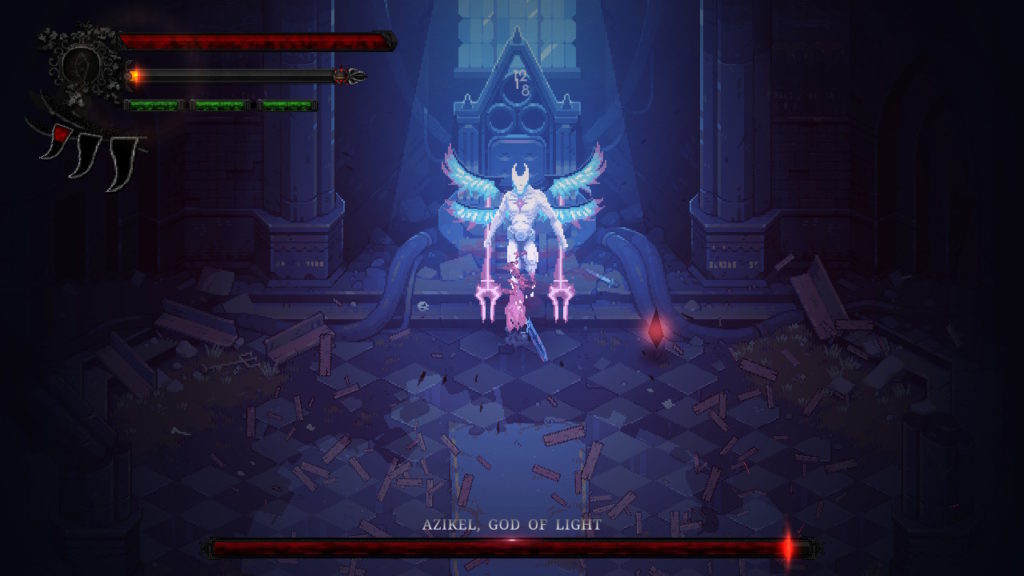
When A Game’s Baggage Is At Odds With My Baggage
Mostly what bothers me about Eldest Souls is the feeling that for the majority of the game, when I was struggling, there just wasn’t a lot I could do to adjust. In a full Souls-like RPG like, well, a Souls game, I can grind out a few levels or switch to a different weapon type to find a strategy that works better for a specific boss. Eldest Souls eventually gets to the point where you have enough points to redistribute or crystals to reassign that it can make a significant difference in your gameplay style, but you have to make it through several bosses to really get there. Getting through the earliest fights becomes more torture than challenge because your only options for adjusting feel interchangeable, and so exercising those options feels pointless.
This lack of adjustability is especially vexing because personally I find that slamming my head into a wall 100 times until the wall finally breaks instead of my skull holds a very minimal appeal. I must admit, however, that those precious few seconds after you finally do manage to outlast a boss can be magical. Until, that is, I remember that my reward for winning is that I have to go fight an even tougher boss 200 times with only slightly broader access to the skill tree. Again, eventually the game does get over the hump to a place where reassigning skill points does have a meaningful impact, but getting there is a joyless grind.
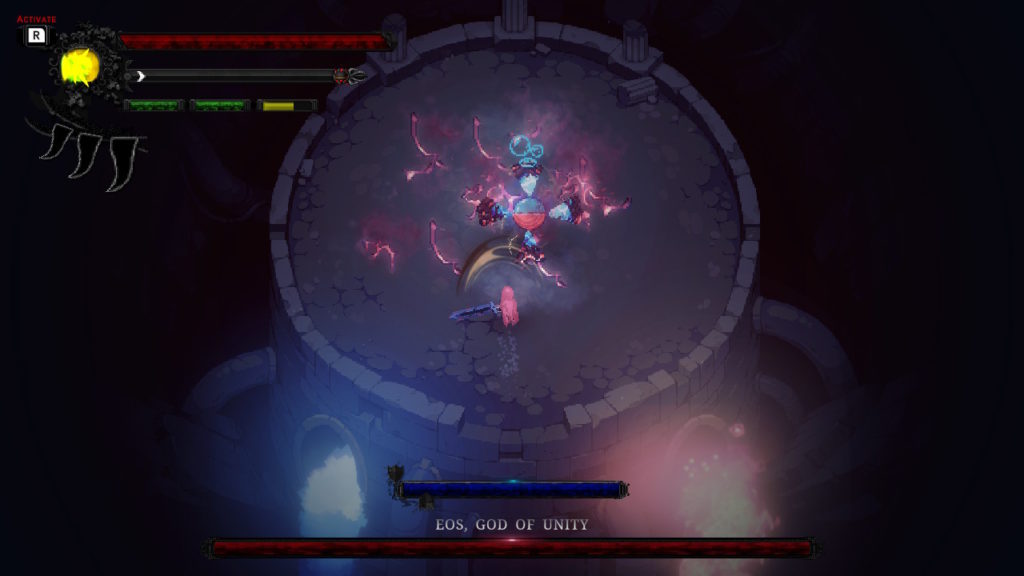
Artiest Souls
Eldest Souls does its best work in the art department. I am a huge fan of pixel art, and ES delivers on that front in a big way. The backgrounds, character sprites, and attack effects are superbly rendered and animated. More importantly, everything looks just as good the fiftieth time you have to replay a boss as it does the first. The music – especially the boss fight music – is grand, sweeping, and intense. The soundtrack suffers slightly from the fact that no boss theme isn’t annoying by the sixtieth time you’ve been unceremoniously splattered all over the walls. That’s more reflective of the repetitiveness of the game type than the quality of the music, however, so I don’t count it as a negative.





Eldest Souls
Digital – $19.99
Follow Fallen Flag Studios
Follow United Label

The Switch Effect was graciously supplied a code for review purposes.
[Review] KONOSUBA – God’s Blessing on this Wonderful World! Love For These Clothes Of Desire! – Nintendo Switch

Developed By: MAGES. Inc. Published By: PQube Categories: Visual Novel…

